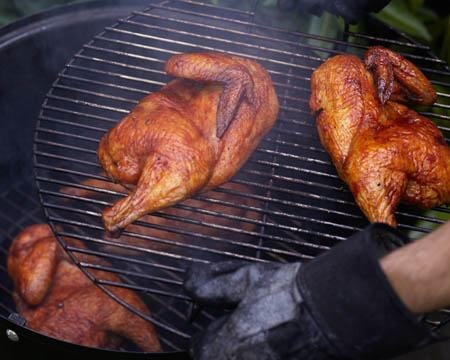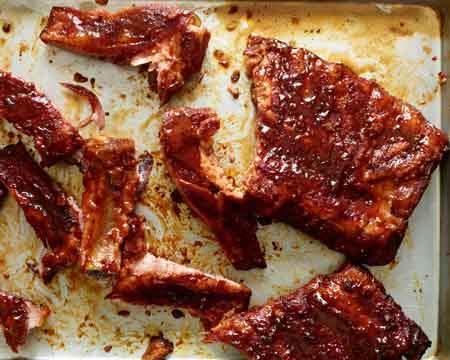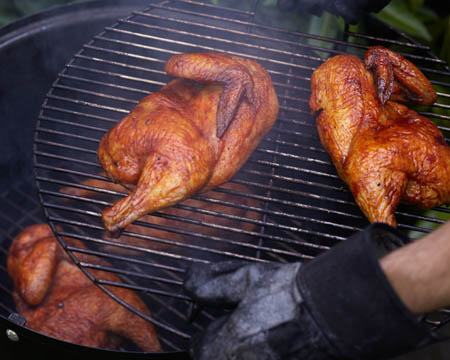Summer Barbecue For Beginners
Ray Lampe's latest cookbook, Slow Fire, is a gentle introduction to the craft of barbecue for beginners and will make a useful addition to the cookbook collection of any budding pitmaster at home, especially with summer in full swing.
The book begins with a definition of barbecue. Lampe writes, "Barbecue sauce does not make meat barbecue... Barbecue sauce is a condiment." Barbecue is just the meat, cooked low and slow (just between 225 and 250 degrees F) over constant heat together with some wood smoke as a flavoring element. However, at the same time, he also advises readers against being a "barbecue snob who thinks sauce is evil." Lampe writes: "Just serve it on the side and let your guests decide how they like it."
Subsequent chapters touch on necessary equipment and offer advice on rubs and sauces, as well as cooking the various types of meat that form the backbone of traditional barbecue — namely ribs, pork, beef, and what Lampe calls "the birds." There's also a chapter called "Anything But," as in "anything but the regular categories of the day," in reference to the catch-all category often seen in barbecue competitions.
Recipes are plentiful and include classic favorites such as Real Texas-Style Beef Brisket and Old-School Barbecued Chicken, as well as diverse twists such as Korean-Style Barbecue Short Ribs and Cuban-Style Leg of Pork.
But the section on equipment deserves special mention because this is arguably the great barrier for many home cooks who want to learn how to cook real barbecue at home. Lampe offers advice on what type of cooker to purchase, including a way to adapt a regular backyard grill, outlines the different types of charcoal and wood, gives advice on what types of wood work best with different types of food (alder, for example, has a mild flavor and is best for salmon and other types of fish), and also shares must-have accessories, some of which may seem obvious (such as fire extinguishers, grill brushes, and spray bottles), and others which are not so obvious — vertical chicken stand, anyone?
Lampe also offers a lot of good general advice. For example, he emphasizes the use of wood smoke as a flavoring element instead of a fuel source because he believes that beginning cooks will have a lot of trouble controlling the amount of smoky flavor imparted to the meat; meat cooked using wood as the main fuel source will come out just too smoky. Or, when tweaking a rub, or trying one for the first time, test on a quick-cooking piece of meat, such as a pork chop.
It's this type of advice, as well as Lampe's clear, approachable style and attention to detail that make this cookbook a keeper — one that will have many sauce-spattered pages.
Click here to see Spicy BBQ Recipes.
Click here to see the Grilling & Barbecue Guide 2012.
Barbecue Championship Ribs Recipe
Guests will marvel at your newfound cooking abilities when these ribs make their way to the dinner table.
Low and Slow Memphis-Style Pulled Pork Recipe
As with all true barbecue recipes, patience is key, but the results are well worth it.
Old-School Barbecued Chicken Recipe
A simple brine and homemade barbecue sauce take this chicken to the next level.
Will Budiaman is the Recipe Editor at The Daily Meal. Follow him on Twitter @WillBudiaman.
This story was originally published on June 25, 2012.



